The enticing scent of juniper berries is known to enhance many dishes, from stews to sauces, and for its essential role in gin production. If you are lucky enough to have a juniper nearby or have bought berries in abundance, storing them correctly is key to enjoying their unique flavour year-round. In this tutorial, we will explore steps to dry and store juniper berries effectively, ensuring they retain their aroma and properties for a long time. So, get ready to dive into art of preserving this small aromatic treasure!
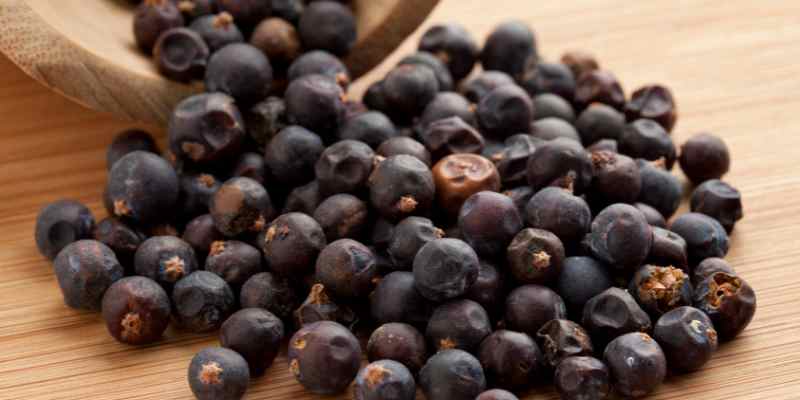
Common juniper in a nutshell
Juniper berries or common juniper (Juniperus communis) is an evergreen conifer best known for its aromatic berries. Native to temperate regions of northern hemisphere, this robust, bushy plant can reach several metres in height. Its sharp needles are deep green and its berries, which can take up to three years to ripen, change from pale green to blue-black. Far more than simple fruits, juniper berries are in fact female cones called "galbuli", long used for culinary and medicinal purposes, offering a sharp, woody flavour to various preparations and playing a key role in gin production. This bush, with its characteristic silhouette and beneficial properties, is a staple of European and North American flora.
Common juniper comes in many varieties: creeping (Juniperus communis 'Repanda'), dwarf (Juniperus communis 'Compressa'), with pyramidal habit (Juniperus communis 'Pyramidal'), fastigiate (Juniperus communis 'Sentinel'), with golden foliage (Juniperus communis 'Goldschatz')... There is something for every taste.
Find all our species and varieties of Juniperus in our online nursery.
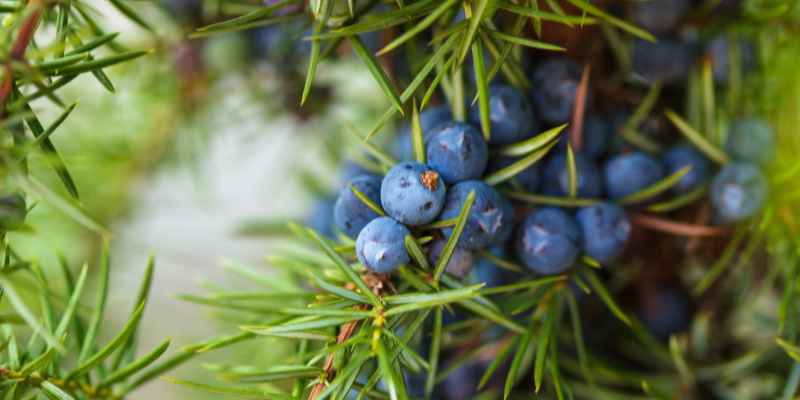
When to harvest juniper berries?
Harvesting juniper berries requires patience and observation, as these berries take two to three years to fully ripen. Here are some tips to determine ideal harvest time:
- Berry colour: Ripe juniper berries are generally a deep blue-black colour, while unripe berries are green. Only blue-black berries should be harvested.
- Harvest period: The best time to harvest juniper berries is generally in autumn, when berries have reached full ripeness.
- Texture: Ripe berries are slightly fleshy and have a mildly soft texture to the touch. If still hard, they are probably not fully ripe.
- Presence of berries at different stages: On same bush, you may observe berries at different stages of ripening due to long ripening cycle. It is not uncommon to see green (immature) and blue-black (ripe) berries on same plant. This means you will need to select berries carefully when harvesting.
- Sustainable harvesting: As juniper berries take several years to ripen, adopt respectful, sustainable approach when harvesting. Try not to remove all berries from single bush to ensure natural regeneration and leave food for local wildlife that may also depend on them.
After harvest, it is recommended to sort berries to remove those that are damaged or imperfect. Once sorted, you can use them fresh, dry them, or preserve them according to your needs.
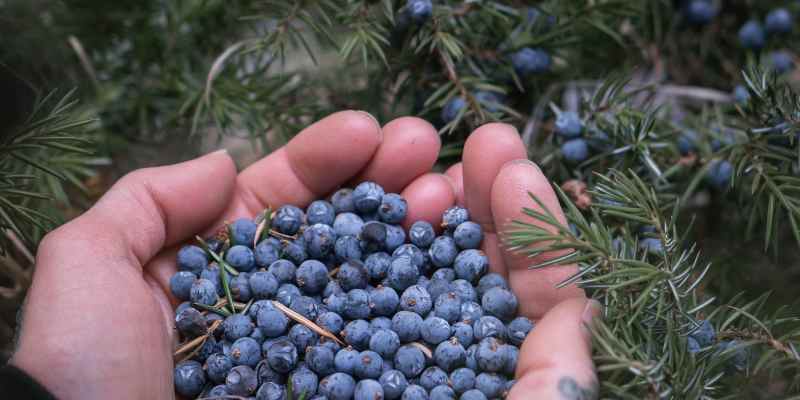
How to harvest juniper berries?
Harvesting juniper berries requires a gentle, methodical approach to preserve both bush and berry quality. Here are steps and recommendations for collecting these precious little berries:
- Preparation :
- Wear gloves to protect hands. Some junipers have sharp leaves.
- Take a harvest basket or container to place picked berries gently.
- Selection :
- Identify berries or galbuli that are deep blue-black in colour, sign of ripeness. Avoid green or pale berries.
- Ensure berries show no signs of mould, damage or disease.
- Picking :
- Gently grasp a ripe berry between thumb and index finger, then twist slightly to detach it from branch. Take care not to crush the berry.
- Work methodically along branch, picking only ripe berries.
- After harvest :
- Once finished harvesting, place berries in a cool, shaded spot until able to process.
- Sort berries to remove damaged, rotten or unripe ones.
- Rinse gently in cold water and dry carefully using a clean cloth or kitchen paper.
Once these steps are complete, you can choose to consume berries fresh, dry them, or use other preservation methods according to preferences and needs.
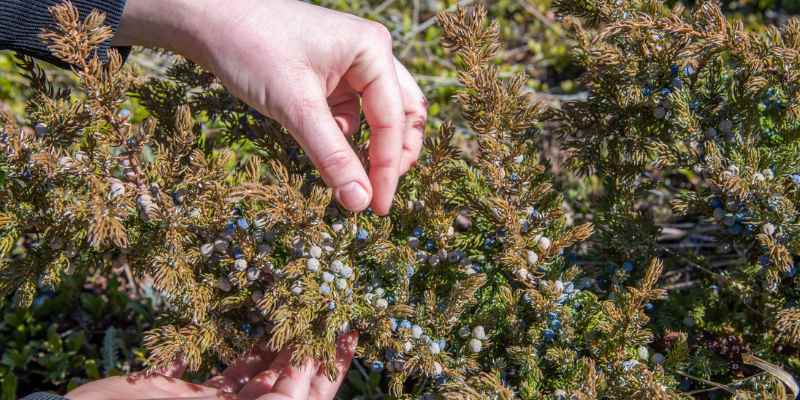
Drying and storing juniper berries
Drying juniper berries is an excellent way to preserve them long-term while retaining aromatic properties. There are 3 methods to dry juniper berries effectively:
1. Drying juniper berries:
a. Air drying:
- Spread berries in a single layer on a rack or sieve to ensure good air circulation.
- Place rack in a warm, dry, well-ventilated area, out of direct sunlight.
- Turn berries daily to ensure even drying. This can take several days to a few weeks depending on humidity.
b. Oven drying:
- Preheat oven to lowest possible temperature (generally between 50–70°C).
- Arrange berries in a single layer on a baking tray lined with baking paper.
- Place tray in oven with door slightly ajar to allow moisture to escape.
- Check regularly to ensure they do not cook. This may take several hours.
c. Using a dehydrator:
- Follow instructions specific to your appliance. Generally, place berries in a single layer on dehydrator trays and dry at low temperature for several hours.
2. Storing dried juniper berries:
- Once berries are completely dry, allow to cool to room temperature.
- Store in airtight containers, such as glass jars with screw lids, to protect from moisture and air.
- Keep containers in a cool, dark, dry place, such as a pantry or cupboard.
- Properly dried and stored berries can keep for several years, but for best flavour, use within year following drying.
Note: Always ensure berries are completely dry before storing to avoid mould formation.
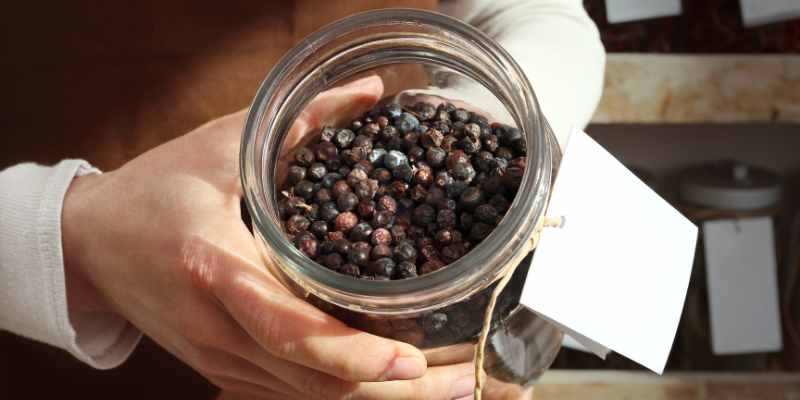
Materials needed
- Gloves
- Harvest basket
- Rack or sieve
- Oven (facultative) or dehydrator (facultative)
- Baking paper (facultative)
































Comments